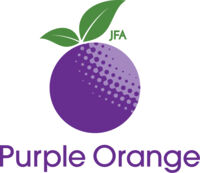Please login or register for an account to get started on building your SKILLs!
Home Modifications and Specialist Disability Accommodation
Key Learnings
- Home modifications are changes to the structure, layout, or fittings of your home
- Assistive technology is aid and equipment that can help you in the home and community
- There are different categories for home modifications and assistive technology depending on their cost and complexity
- SDA is housing designed for people with high support needs
Home Modifications
Home modifications are changes to the structure, layout, or fittings of your home so you can safely access and move around comfortably.
Home modifications can be included in your NDIS plan if:
- You or your carers cannot access and frequently use rooms and spaces in your home
- Your current environment is impacting on your ability to stay in the home or receive support long term
- An occupational therapist has performed an assessment, considered possible alternatives like the use of equipment, and still recommends home modifications
As with any building work, there are laws and regulations that need to be followed under NDIS modifications. Depending on the size and difficultly of the proposed home modifications, there are different guidelines to follow. (see helpful links below)
There are three broad categories for modifications:
- Simple low-cost adaptations, such as grab rails or mounted shower chairs
- Minor home modifications that are non-structural, but require professional support to deliver the right solution, such as non-structural door widening
- Complex adaptations that involve structural changes that are higher cost and higher risk, such as an accessible bathroom
Helpful Links
Getting complex modifications made to your home can be quite a long process. Check out the links below for more information.
To learn more about home modifications you can visit Home Modifications Explained.
For more information about complex home modifications and learn how complex home modification applications are assessed, check out the NDIS page here.
If you have a question, request or urgent issue relating to home modifications, start by contacting the NDIS or your LAC to discuss. You can call the NDIS on 1800 800 110 OR find your local office and contact details here.
Assistive Technology (AT)
For some people adding assistive technology allows them to access key areas of their house and make them feel more at home.
Let’s watch Terry’s story on how assistive technology is making a positive impact on his home and daily life.
We saw some great examples of assistive technology in the video. Other aids and equipment to think about could include:
- Low-cost AT items under $1500, which can be paid for from your NDIS Core funding
- High-cost items such as beds, wheelchairs and power chairs. These require an AT assessment by an occupational therapist.
In Topic 3 - Manage Your Supports, we briefly looked at the levels of Assistive Technology. Let’s look at them again in a bit more detail.
The NDIS now divides AT into three categories depending on cost. Here is some information about each:
1. Low-cost assistive technology - under $1,500 per item
a) Easy to set up and use
b) Available from everyday suppliers 'off the shelf'
c) You can use your core budget funding to buy these items
2. Mid-cost assistive technology - $1,500 - $15,000 per item
a) Perhaps more specialised and may need modifications or training to use
b) The capital budget in your NDIS plan shows your mid cost assistive technology funding. This will be a broad
category and not itemised. For example, your plan might say 'Assistive Products and Accessories for Personal Care,
Hygiene, and Beds'.
3. High-cost assistive technology - over $15,000 per item
a) More complex and you need an individual assessment to make sure it’s the right equipment for your needs
b) Need specialised knowledge or tools to set up
c) May be custom made
d) Generally need a quote so the right amount of funding is included in your plan
Helpful links
Check out the NDIS website for more information on assistive technology and equipment.
Specialised Disability Accommodation (SDA)
SDA is housing designed for people with very high support needs. Roughly 6% of NDIS participants are eligible and often this is funded for people under 50 that are at risk of entering a nursing home.
The scheme is designed to give builders incentives to include accessible design features in newly built homes.
Participants must work with an SDA provider to source their home. An SDA provider is the person or organisation that owns the SDA building and is the participant’s landlord. The participant pays rent to the SDA provider.
Here are some examples of SDA providers around Australia. Visit the links to learn more about each service.
In the next video, Sharon provides a definition of SDA from a participant’s point of view and shares how SDA has changed her life.
Helpful links
To learn more about the SDA and see if you’re eligible, click here.
For more examples of personalised and accessible homes, check out the Opening Homes website.
Well done you have now completed section three! Next, we explore funded and informal home supports. See you there!


